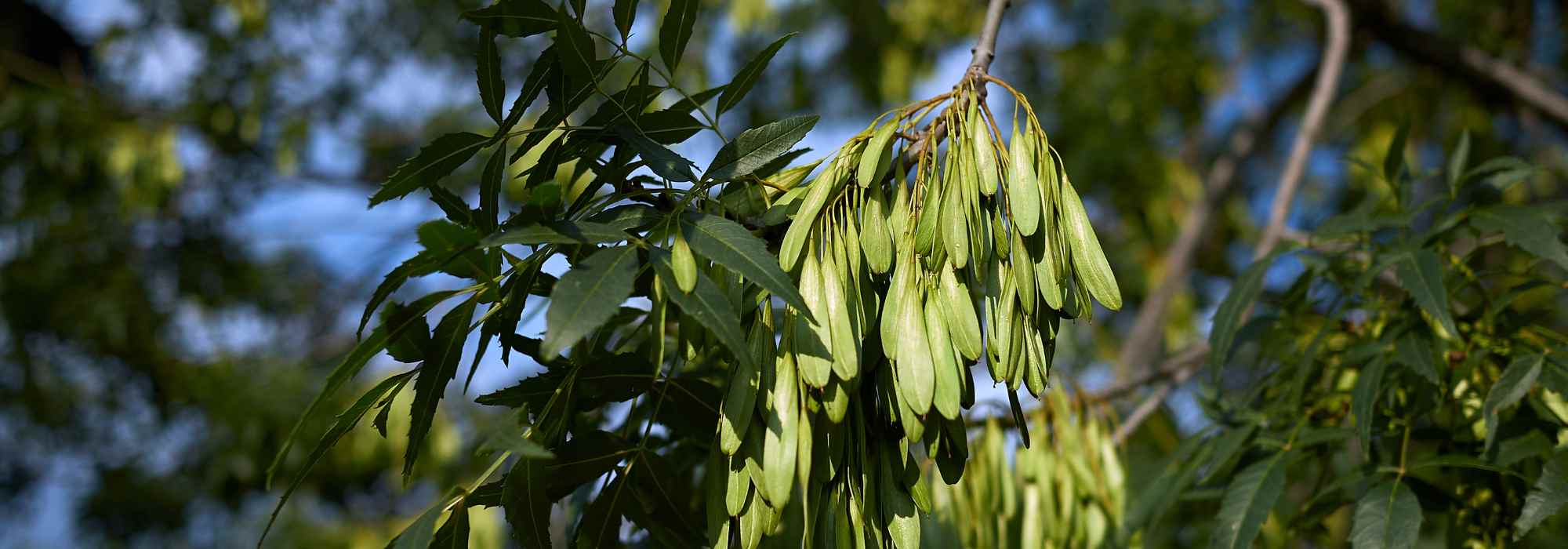
Ash: planting, pruning, and care
Contents
The ash tree in a few words
- The Ash tree is a tall tree admired for its elegant habit
- Its leaves, composed of multiple leaflets, take on warm tones in autumn
- It can reach monumental sizes, up to 30 metres tall for the common ash
- Perfectly hardy, it tolerates all types of non-scorching exposure and adapts to any ordinary soil, provided it is deep and remains moist
- It provides a pleasant shady spot in summer and will look splendid as a standalone feature in a large garden, in a mixed hedge, or by a body of water
The word from our expert
The Ash tree, in Latin Fraxinus, is a tall and elegant tree from our French forests, well-known in the form of the common ash or European ash (Fraxinus excelsior). This true patriarch, with its lofty habit and unmatched presence, is destined for the ornamentation of parks or large gardens when not used as a street tree in urban areas. An iconic tree, the ash stands out for its large leaves divided into leaflets of an intense dark green that take on warm hues in autumn.
Alongside the common ash, there are other species and varieties no less interesting, of more modest sizes, suited to medium-sized gardens. Particularly robust, the Fraxinus angustifolia ‘Raywood’, for example, charms us with its beautiful dark green foliage that turns lovely red and coppery shades in autumn. Meanwhile, the Fraxinus chinensis ‘Emma’s Gold’, a dwarf variety of Chinese ash, dazzles us from spring to autumn with its golden foliage. For its part, the Fraxinus angustifolia ‘Variegata’ surprises with its variegated leaves. The Fraxinus ornus enchants us with its generous and fragrant spring flowering.
Fast-growing and cold-resistant, this tree thrives in deep, moist soils, adding a touch of nobility to your garden, whether planted alone or by a water feature. As it tolerates pruning perfectly, it is entirely possible to limit its growth in a grove or as part of a large shrubby hedge. It is under its generous shade that you will find refuge during hot summer days.
Discover this elegant and easy-to-grow essential oil tree!

Fraxinus ornus
Description and Botany
Botanical data
- Latin name Fraxinus
- Family Oleaceae
- Common name Ash
- Flowering March-June
- Height 7-40 m
- Exposure Sun, partial shade
- Soil type light, rich, well-drained
- Hardiness -30 °C and beyond
The Ash, in Latin Fraxinus, belongs to the Oleaceae family, which includes jasmine, olive, as well as lilac and osmanthus. The genus Fraxinus comprises around sixty species, three of which are particularly common in Europe. Among them, we find the Manna Ash (Fraxinus ornus), the Narrow-leaved Ash (Fraxinus angustifolia), the Common Ash (Fraxinus excelsior), and the Chinese Ash (Fraxinus chinensis).
Native to Europe, Asia Minor, and North Africa, the ash is commonly found along riverbanks and in forests. Its upright and sturdy trunk is covered with bark, often silvery-grey, initially smooth, developing long fissures with age. It develops one or more trunks, with diameters that can exceed 1 m.
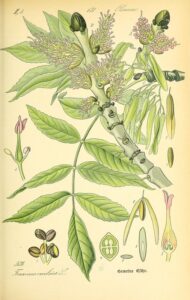
Fraxinus excelsior. Botanical plate circa 1920
From a taproot, the ash forms an elegant tree with a conical to rounded, even spreading habit. The crown is airy, highly branched, with strong, slender branches. The Fraxinus excelsior ‘Pendula’, or weeping ash, stands out with its spreading parasol habit.
Ultimately, the ash reaches an average height of 5 to 20 m and a spread of up to 12 m, sometimes more when mature, depending on the species and growing conditions, with a growth rate ranging from fast to slow. Some patriarchs can climb up to 40 m in height.
Robust branches support an airy and expansive crown, finely branched. Slender, glabrous twigs bear deciduous foliage. The ash’s foliage appears quite late in spring. It consists of pinnate leaves, each composed of 5 to 15 narrow, opposite leaflets. These leaves, lanceolate in shape, are easily recognisable by their finely dentate margins. They measure between 20 and 30 cm in length and are glabrous and dark green on the upper side, lighter and slightly downy underneath. Some, like the Fraxinus chinensis ‘Emma’s Gold’, display golden foliage, dazzling from spring to autumn. The Fraxinus angustifolia, or narrow-leaved ash, distinguishes itself with its finer and longer leaves compared to the common ash. As for the Fraxinus angustifolia ‘Variegata’, or variegated ash, it stands out with its white-edged leaflets, offering a striking visual contrast.
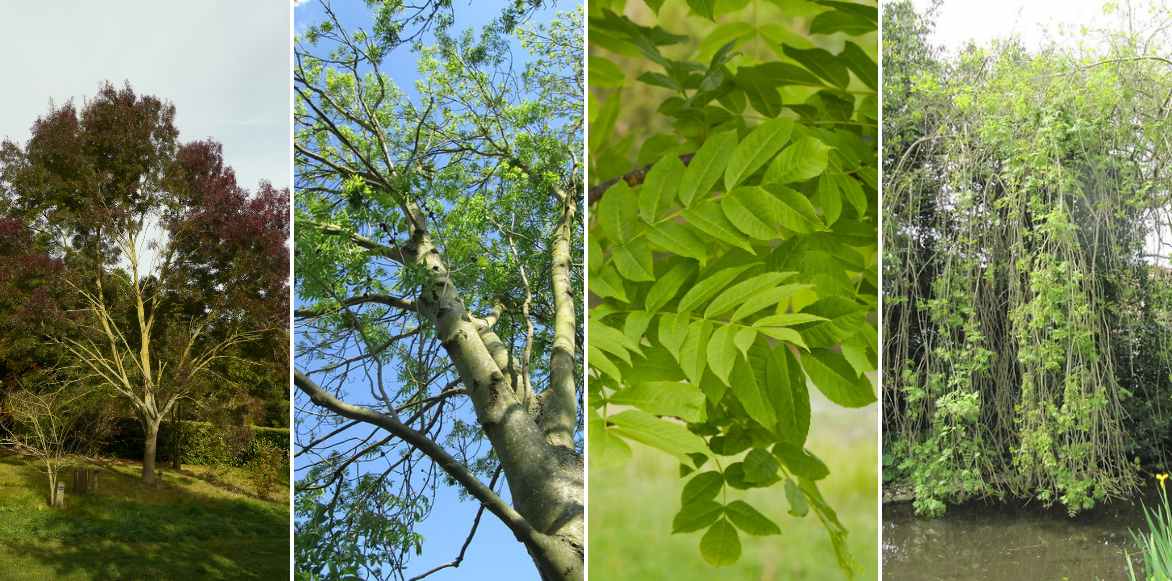
Fraxinus angustifolia ‘Raywood’, Fraxinus excelsior, silhouette (© Andreas Rockstein), and foliage. On the right, Fraxinus excelsior ‘Pendula’ (© Leonora Enking)
In ash trees, the foliage displays a changing palette of colours with the seasons, shifting from dark green in spring to fiery orange in autumn before falling.
Flowering typically occurs in spring, from March to May, often before the foliage appears. The flowering of ash trees is usually not spectacular, but it is highly nectariferous, attracting many bees, bumblebees, and butterflies. Their pollen can be allergenic. The ash is recognisable by its large, velvety black floral buds characteristic at the tips of the stems. The flowers, devoid of petals, cluster into cream-yellow panicles, 10 to 20 cm long, at the ends of the year’s shoots. The foliage disappears in spring under this fragrant and melliferous flowering, exuding a hawthorn-like scent. The Fraxinus ornus, or flowering ash, is an exception with its spectacular and massive flowering.
After pollination, greenish fruits, called samaras, appear in hanging clusters. These are achenes equipped with a wing, facilitating their dispersal by the wind.
Ash trees play a vital role in biodiversity, serving as habitats for numerous insects, birds, and small mammals.
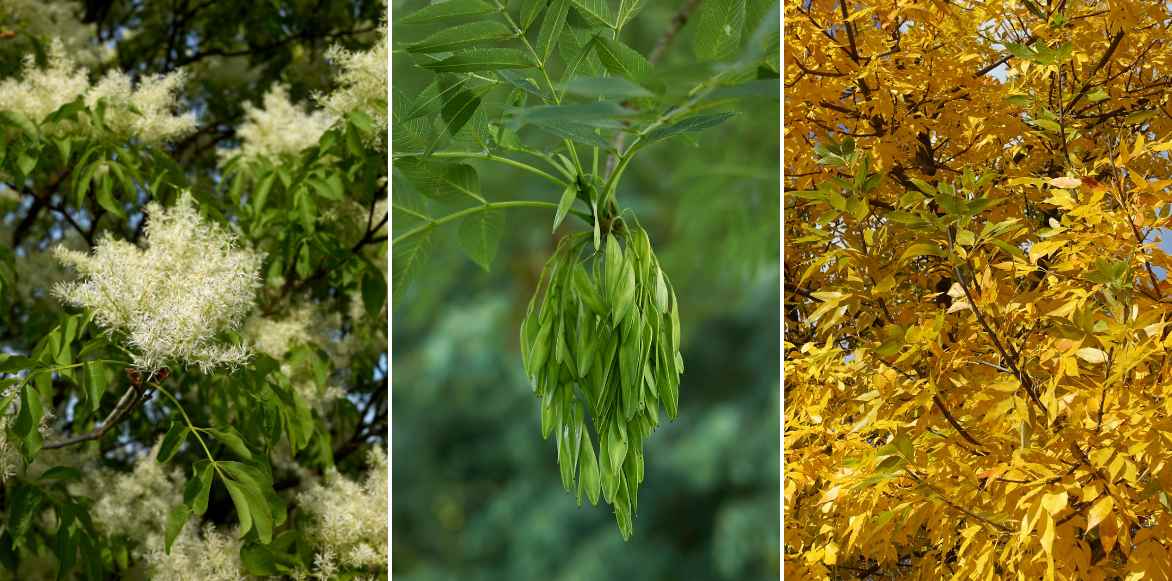
Flowering of a Fraxinus ornus, samaras of Fraxinus excelsior, and autumn foliage of a Fraxinus pennsylvanica
Main species and varieties
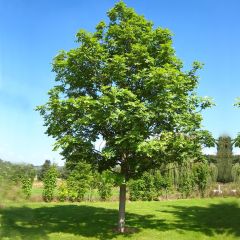
Fraxinus excelsior - Ash
- Flowering time May
- Height at maturity 30 m
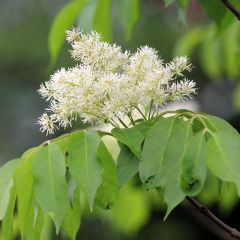
Fraxinus ornus - Manna Ash
- Flowering time June
- Height at maturity 7 m
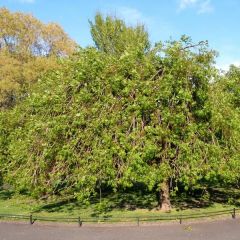
Fraxinus excelsior Pendula - Ash
- Flowering time May
- Height at maturity 15 m
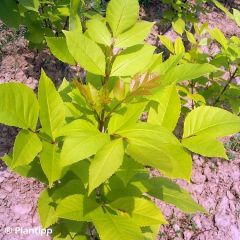
Fraxinus chinensis Emmas Gold - Ash
- Flowering time May, June
- Height at maturity 5 m
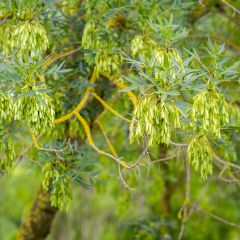
Fraxinus angustifolia - Ash
- Flowering time May
- Height at maturity 15 m
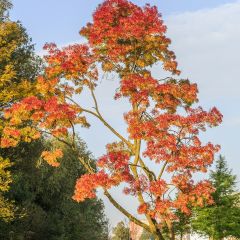
Fraxinus angustifolia Raywood - Ash
- Flowering time May
- Height at maturity 15 m
Discover other Fraxinus - Ash tree
View all →Available in 1 sizes
Available in 1 sizes
Available in 1 sizes
Available in 1 sizes
Available in 1 sizes
Available in 1 sizes
Available in 1 sizes
Available in 1 sizes
Available in 1 sizes
Available in 1 sizes
Planting the Ash Tree
Where to Plant It?
The ash tree is very hardy, tolerating temperatures as low as -34°C (USDA zone 4), and adapts easily to various conditions, as it is undemanding. It thrives in all types of exposure, as long as it is not scorching. It grows readily in any good garden soil, even if it is chalky, rich, deep, and moist. Choose an open location, sheltered from prevailing winds, in non-scorching sunlight. However, it does not particularly enjoy the Mediterranean climate, which is too dry and hot, with the exception of Fraxinus ornus and the Southern Ash, which grow in warm climates and adapt to dry, chalky soils, tolerating drought remarkably well. Generally, however, this riverside tree requires permanently moist soil, at least at depth, to thrive.
The ash tree is a large tree that can reach 20 metres or more with age. Unless you choose a compact variety, it should be planted in a garden large enough to accommodate it. Such a majestic tree demands a carefully chosen location, in deep soil and an open setting. If you are fortunate enough to have a large garden, consider planting your ash tree as a standalone specimen or as part of an avenue. If you wish to incorporate it into a mixed border, ensure there is enough space for it to grow freely. Its airy branches pleasantly filter the light in summer without casting too much shade. It will look splendid as a standalone tree by a water feature, in a loose hedge, or in a wooded border for less bulky varieties.
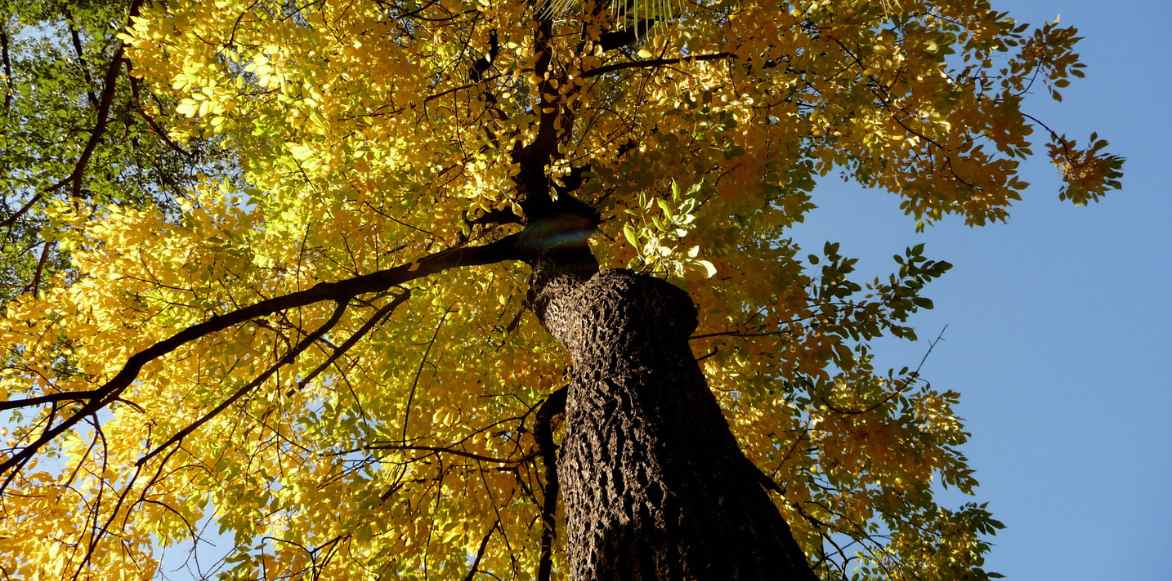
Fraxinus excelsior in autumn, imposing and majestic (© manuel m.v.)
When to Plant It?
Ideally, the ash tree should be planted in autumn, a period conducive to root establishment before winter, in any properly prepared and sufficiently deep soil. However, if you haven’t had time to plant it in autumn, you can do so until spring, avoiding frost periods. For container-grown specimens, planting can be done throughout the year, provided you water well during the first year. If you choose to plant it in summer, regular watering is essential to prevent the tree from suffering from drought.
How to Plant It?
Choose a sunny and open location, shaded in hot climates. The ash tree is a large tree that requires ample space to develop properly. It is therefore particularly suited to large gardens where it can flourish without constraints. Allow at least 4 metres between your ash tree and another tree. Be sure to respect planting distances so that each plant has enough space to grow. Add organic matter at planting time, especially if your soil is poor.
- Dig a planting hole, two to three times the size of the root ball (approximately 1 to 1.4 metres in diameter and 0.8 to 1 metre deep)
- Spread a 30 cm layer of clay pebbles or gravel at the bottom of the hole
- Add one to three spadefuls of well-rotted compost
- Place the ash tree in the centre of the hole, ensuring the collar is not buried: the root ball should be level with the soil surface
- Backfill with soil and lightly firm
- Stake with one to three supports
- Water
- Spread a layer of mulch around the base to retain moisture and suppress weeds
- Water generously for the first few weeks to encourage establishment, especially during dry spells
Cultivation, care, pruning
The ash tree requires no maintenance, except regular watering for the first three years, and in case of prolonged drought. In the first year: maintain regular watering during the summer. Once well established, it can withstand temporary drought. In case of extreme heat, do not hesitate to increase water supply.
Mulch in summer to retain moisture at its base. Add compost in spring by lightly scratching the surface around the tree to promote its growth.
Stake young plants to protect them from strong winds.
Pruning the ash tree
Pruning is only necessary if the tree becomes too large and the allocated space proves insufficient. It involves reducing the development of the crown. It is generally carried out in late winter, before the first leaves appear or after the bud burst period, avoiding frost periods. Limit pruning to small-diameter branches and, for mature trees, avoid severe pruning and cutting branches with a diameter exceeding 10 cm. Every three years or annually if needed, to rebalance the branches:
- Remove dead or poorly oriented branches,
- Shorten the longest branches to balance the tree’s habit,
- Thin out the centre of the crown.
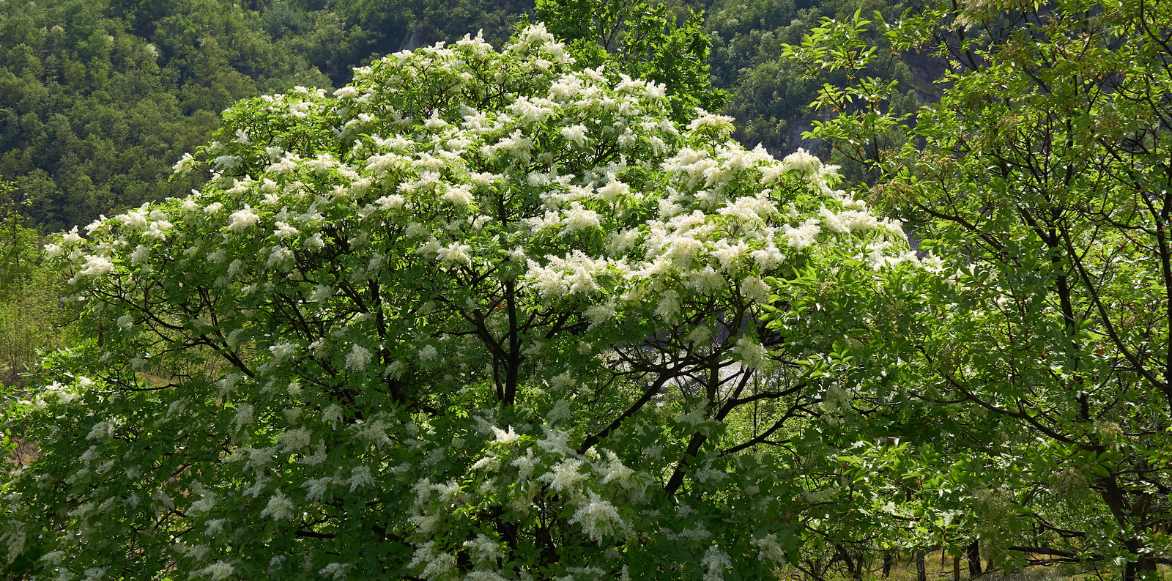
Fraxinus ornus
Diseases and potential pests
The ash trees are generally very resistant to diseases and pests. However, since 2012, they have been endangered by chalara dieback, a devastating fungal disease that is decimating European ash trees and for which there is no treatment. Ash dieback causes necrosis at the collar, branches, and can lead to the death of the tree. They can also be susceptible to honey fungus or root rot, a fungus that also leads to the death of the tree. As no treatment is effective against these deadly fungi, ensure perfect drainage at planting and avoid severe and repeated pruning, which leaves numerous wounds that serve as entry points for fungi and bacteria.
Pest insects (aphids, caterpillars, etc.) may attack your tree, but they are not dangerous.
Multiplication
The ash tree tends to self-seed very easily if conditions are favourable. To propagate it, you can collect the seeds in autumn, stratify them during winter (i.e., expose them to cold by placing them in the fridge), and then sow them in spring. Sowing from fresh seeds is the simplest method of propagation. Propagating ash trees by grafting or propagation by cuttings remains a task for professionals.
By sowing
- Harvest the samaras in autumn when they are fully ripe and detach easily from the tree
- Place them in the cold
- Soak the seeds in water for a day to encourage germination
- Fill a tray or pot with compost, then sow 1 or 2 seeds per pot
- Cover them with a thin layer of compost, then water lightly.
- Place the tray or pot outdoors, sheltered from the weather
- Let nature take its course during winter. The seedlings should begin to germinate in spring
Associations
With its elegant foliage and beautiful autumn colours, the ash tree is ideal as a standalone feature, in a row, or as a backdrop in a flower bed. Many plants thrive in the shade of large trees! The deciduous foliage of the ash tree provides welcome shade for plants that prefer partial or full shade. It will host lush ferns, hostas, and the delicate, fresh flowering of Solomon’s Seal. Hydrangeas will also appreciate the shade provided by the ash tree’s foliage. An Acer campestre will also be a great companion for creating a stunning natural scene in autumn. It pairs well with the Cornelian cherry, as well as other spring-flowering bushes like lilacs or Syringa.
Consider also creating colourful and vibrant tapetums by planting a multitude of small spring bulbs under your ash tree; daffodils, tulips, and other spring bulbs can enjoy the sunlight in spring before the ash tree produces its foliage. Some shade-loving perennials will take over for the summer, such as creeping bugleweed, Geranium macrorrhizum, and Pachysandra terminalis, forming a resilient carpet of flowers at its base, even among tree roots.
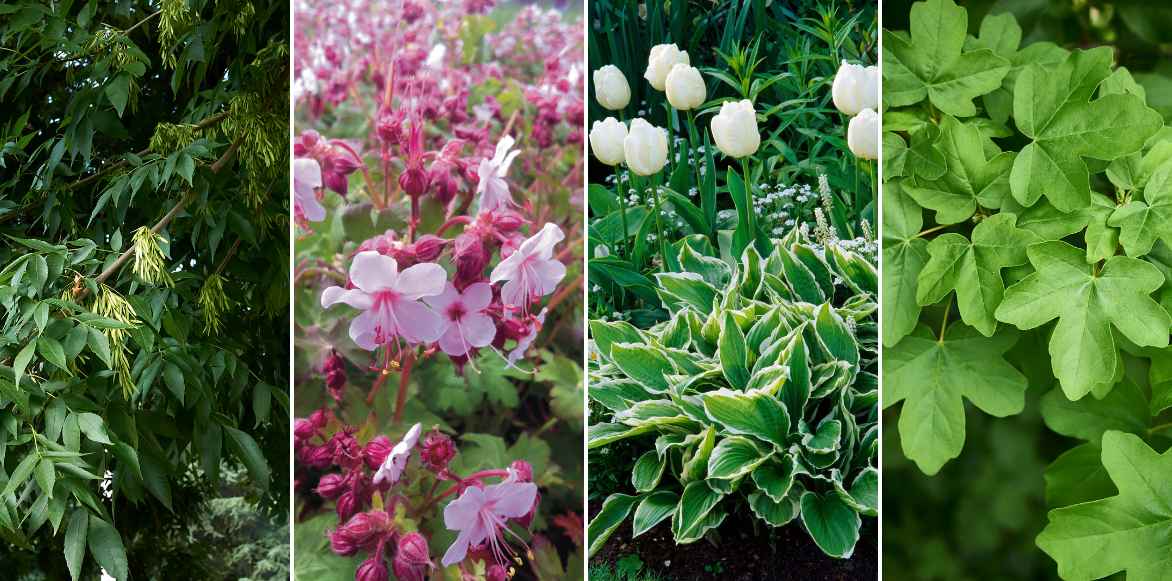
Common ash, Geranium macrorrhizum ‘Olympos’, hostas, tulips, and field maple
Did you know?
Particularly hard and dense, the wood of ash is used in cabinet-making and carpentry, especially for making tool handles. The manna ash, flowering ash (Fraxinus ornus), offers another fascinating asset: its manna, a sweet and syrupy sap harvested after incising the bark. Once widely used by apothecaries, manna is still prized in herbal medicine for its purgative and diuretic properties.
Useful resources
- Which trees to choose for a park?
- How to choose an ornamental tree for your garden?
- Subscribe!
- Contents
































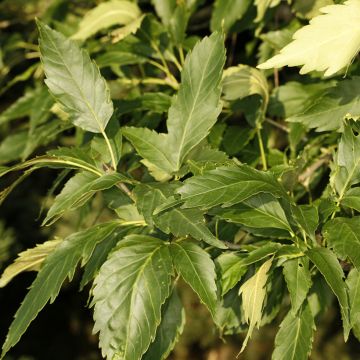
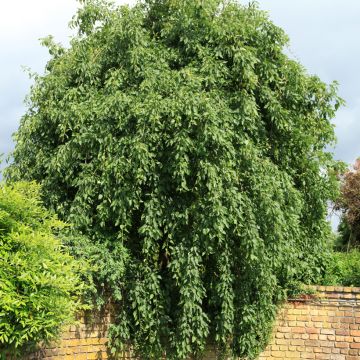

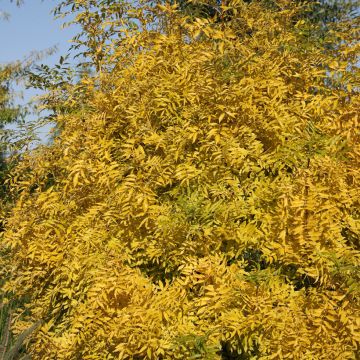

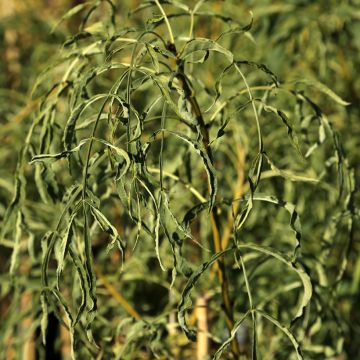
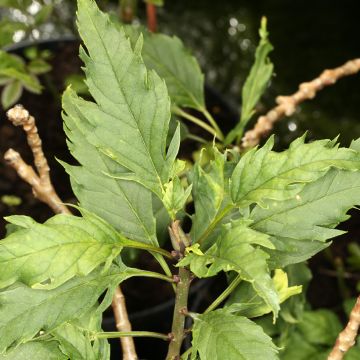
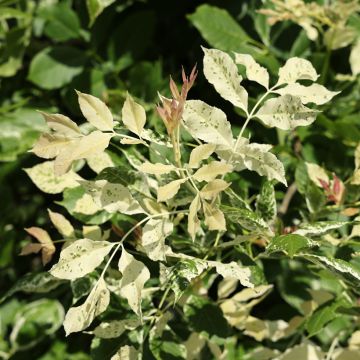
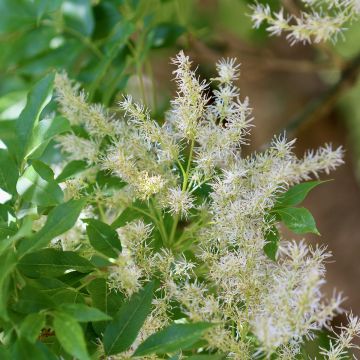
Comments